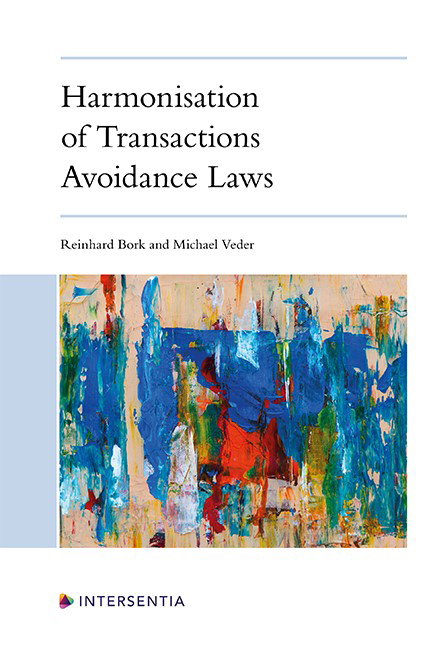Estonia
Published online by Cambridge University Press: 26 May 2022
Summary
PART 1. DETAILS OF YOUR NATIONAL TRANSACTIONS AVOIDANCE LAW
I. SYSTEM
Question 1. Is your transactions avoidance law (for terminology cf. Introduction at C.) part of insolvency law or is it in parts or as a whole incorporated in other fields of law (e.g. general civil law, commercial law, company law)?
Estonian transaction avoidance law is incorporated only in the Bankruptcy Act (Pankrotiseadus) and in the Code of Enforcement Procedure (Täitemenetluse seadustik). The Bankruptcy Act enacts rules for the collective liquidation procedure, with one exception – compromise, and the Code of Enforcement Procedure enacts rules for individual enforcement procedures. However, this report concentrates on recovery of transactions in bankruptcy proceedings.
Transaction avoidance is not possible in cases of reorganisation of companies under the Reorganisation Act (Saneerimisseadus) or natural persons under the Debt Restructuring and Debt Protection Act (Võlgade ümberkujundamise ja võlakaitse seadus).
Question 2. Are the rules on transactions avoidance law in your jurisdiction the same for entrepreneurs/legal entities and consumers/natural persons? If not, please explain the differences and take it into account when completing this questionnaire.
General rules of transaction avoidance are the same for legal persons and natural persons, including entrepreneurs. The only difference is where avoidance of transaction is related to the marital joint property, because it is only applicable on natural persons.
Question 3. Are the rules on transactions avoidance law in your jurisdiction the same for liquidation and restructuring proceedings (if any)? If not, please explain the differences and take it into account when completing this questionnaire.
There are no transaction avoidance rules for the reorganisation of companies and for the debt arrangements of natural persons. Transaction avoidance is implemented only in bankruptcy proceedings and in certain cases in individual enforcement proceedings.
Question 4. Are the rules on transactions avoidance law in your jurisdiction the same for debtor-in-possession proceedings (if any)? If not, please explain the differences and take it into account when completing this questionnaire.
Debtor-in-possession proceedings are governed by the Reorganisation Act. Therefore, transaction avoidance is not possible in debtor-in-possession proceedings, because there are no rules for transaction avoidance in the Reorganisation Act.
- Type
- Chapter
- Information
- Harmonisation of Transactions Avoidance Laws , pp. 731 - 776Publisher: IntersentiaPrint publication year: 2022

